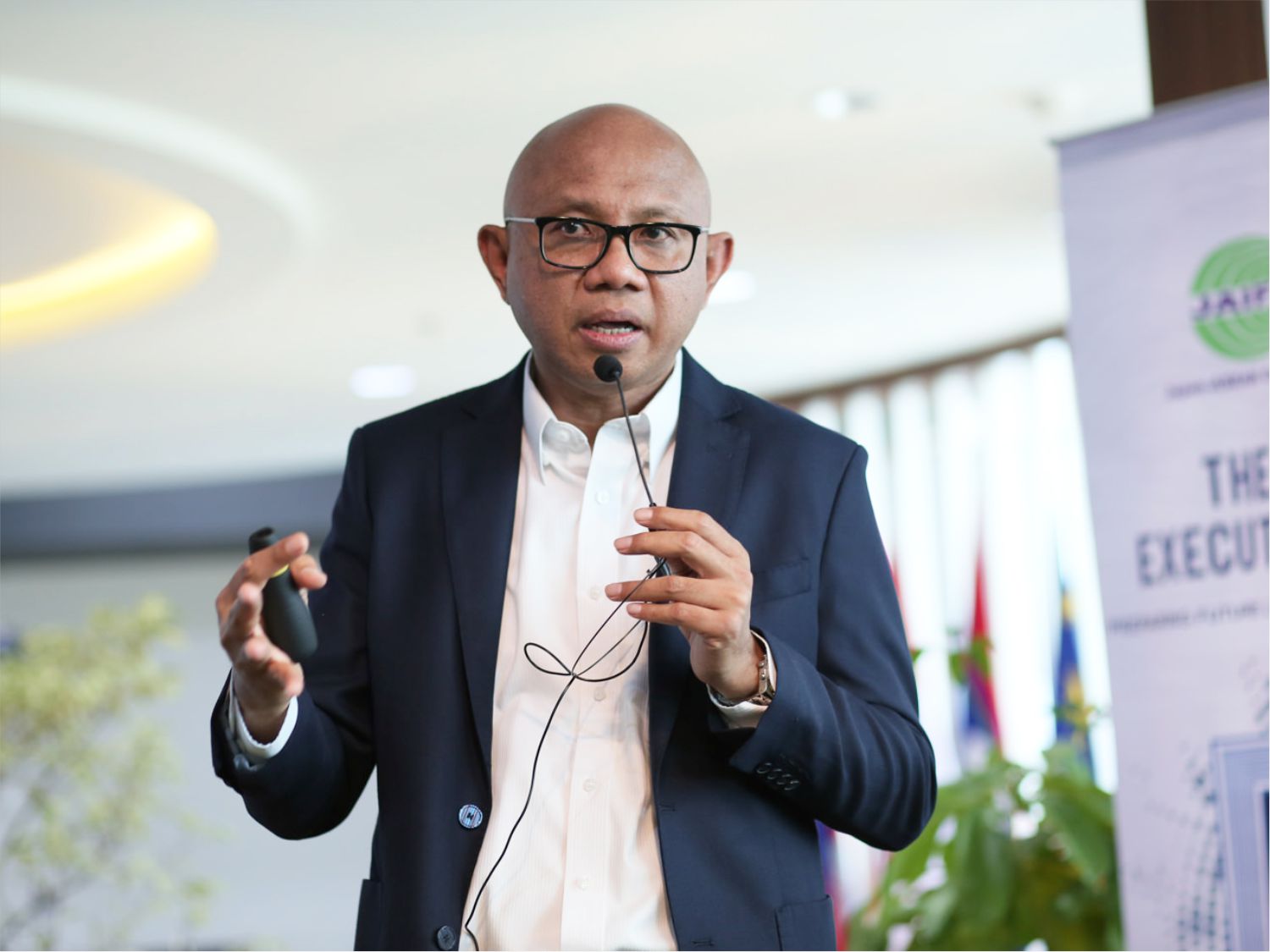
DR. WILLIAM SABANDAR
Continuing on from last month, this volume’s Other Side draws on the experience of an ASEAN’s leader in disaster management – Dr. William Sabandar – an experienced presenter in the AHA Centre Executive (ACE) Programme’s Leaders Talk series. Dr. Sabandar is the CEO of PT MRT Jakarta, the entity charged with the recent delivery and operation of Jakarta’s modern train network. However he is also renowned for his leadership throughout a range of ASEAN’s largest disaster events that have occurred over recent decades. The insights into Dr. Sabandar’s talk were provided this month by the ACE Programme’s own Sridewanto Pinuji.
Dr. Sabandar has been an ASEAN leader for decades, moving from business into the disaster response field, and most recently leading the establishment of the modern and effective MRT system in Jakarta. Dr. Sabandar drew on these array of leadership experiences as he spoke about the key qualities of leadership during an emergency event. Such experiences include the aftermath of the 2004 Indian Ocean tsunami, leading recovery after 2008’s Cyclone Nargis, and how these skills could be transferred leading the establishment of Jakarta’s MRT.
The key defining aspect of all such work, Dr. Sabandar reminds us that leaders must be on the ground. By doing so, they can talk to affected communities in order to understand and fulfil their needs, and supporting in any way possible from the front. “Leading in a crisis is to maintain certainty and belief, and also ensure no further casualties” he highlighted in the session. Another key lesson Dr. Sabandar has learned from managing various crises is how to develop a strong, supportive mentality for teamwork and togetherness for all members of a team. This is closely followed by building trust that a team will work together to eventually solve the problems and complete their job with quality and good timing.
Dr. Sabandar believes that strong leadership during a crisis can also attract more people to engage and provide support. This, he said, only can be achieved when the leader can maintain integrity and trust. Trust is key in a crisis, as if it diminishes, it can jeopardise the work and efforts that have previously been developed.
“THEREFORE, WHEN SUCCESS CAN BE ACHIEVED, LEADERS SHOULD MAINTAIN THE MOMENTUM AND BUILD ON THIS OUTCOME”
DR. WILLIAM SABANDAR
Dr. Sabandar also believes that not only do disasters engage current leaders, but they can also create new leaders, as everyday individuals are thrust into roles that highlight their internal leadership qualities. People who are on the ground during disaster can often find themselves in situations where they are required to take the lead, and skills such as communication, decision-making, focus and preparedness to change can all come to the fore.
Overall, while Dr. Sabandar has high hopes for the future of disaster management in the ASEAN region, he also highlights a number of key areas requiring more attention as ASEAN continues in its disaster management journey. Firstly, he recognises that preparedness and prevention require more attention through education, particularly for communities to understand disaster risk be empowered to undertake their own prevention and preparedness efforts. This requires attitude shift and extra resourcing, with focus moving away from the historic response-orientated context.
Secondly, Dr. Sabandar believes more attention needs to be afforded to clearer understanding of the nature of the disaster itself, which requires knowledge regarding the science and complexity of a phenomena, to help determine proper action to take. Lastly, when looking at the role of bodies such as ASEAN and the AHA Centre, Dr. Sabandar recognises the important role played by ASEAN in bridging governments and various humanitarian institutions. This role, he said, can significantly enhance the preparation, response and recovery efforts during the aftermath of a disaster. Central to this is the AHA Centre itself, which forms a new and innovative model for managing disaster in the region – a mechanism that can be followed by other regional bodies around the globe.
Written by : Sridewanto Pinuji | Photo : AHA Centre



